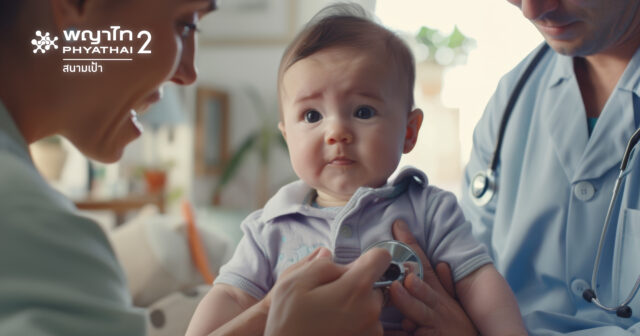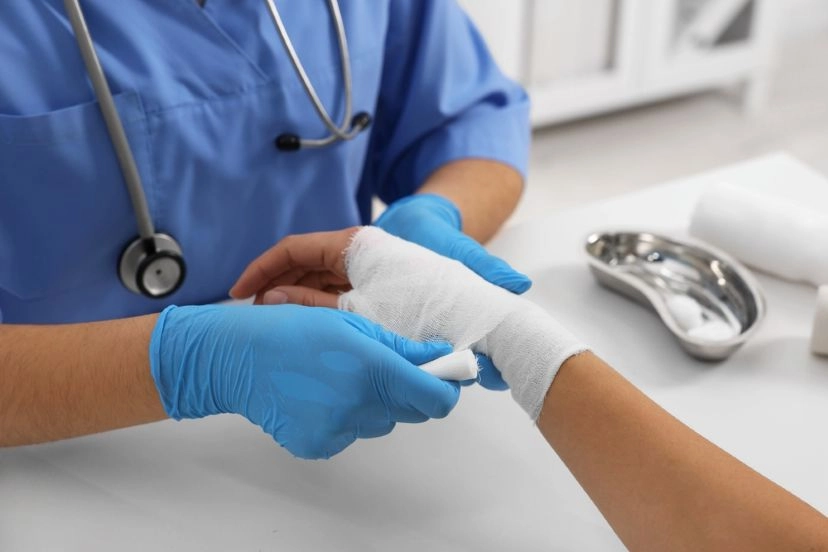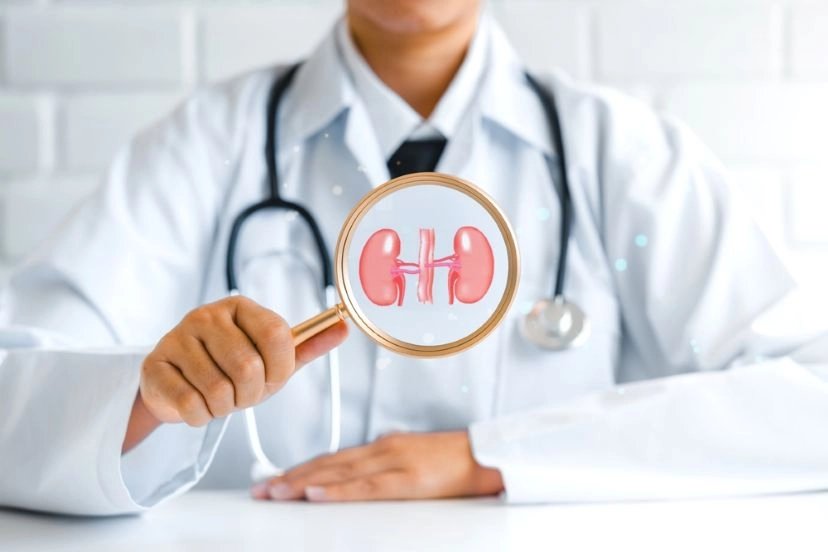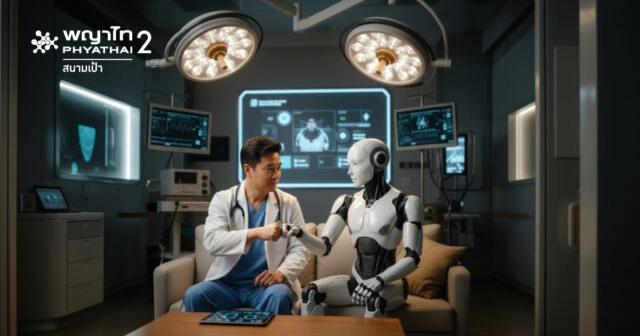Pediatric Pyelonephritis: Understanding for Proper Treatment and Prevention

Children are not just small adults. The illnesses that affect children, even if they are the same as those in adults, can have different causes, symptoms, and severity that may pose more significant problems in children. These conditions can also impact organ development and long-term growth, especially in cases of pyelonephritis. Today, we aim to familiarize parents with this disease, including its symptoms, diagnosis, treatment, and preventive measures to reduce the risk of occurrence.
What is Pediatric Pyelonephritis and How Common Is It?
Pediatric pyelonephritis, or kidney infection, is a condition caused by bacterial infection in the kidneys or renal pelvis, primarily by Escherichia coli (E. coli), which is found in the rectum and large intestine. The bacteria enter the urinary tract through the urethra and travel up the ureters to the kidneys, leading to pyelonephritis. This condition occurs in about 3% of infants, particularly in those under two years old, as their urinary systems are still developing and are at higher risk of vesicoureteral reflux (VUR), a significant factor leading to infection. It is also found in children with congenital kidney or ureter abnormalities.
In infancy, boys are at a higher risk of developing pyelonephritis due to urinary tract infections (UTIs) compared to girls because boys are more likely to have congenital urinary tract defects, such as vesicoureteral reflux or urethral stricture. However, as children grow, girls become more at risk than boys due to their urethra being closer to the rectum, which increases the chance of bacterial contamination.
Pyelonephritis can lead to permanent kidney damage, especially in cases of severe or recurrent infections, affecting growth and potentially leading to kidney scarring, chronic kidney disease, or other complications such as hypertension.
Factors and Causes of Pyelonephritis in Children
Factors and causes of pyelonephritis in children include:
- Urinary tract infections (UTIs) that spread from the bladder to the kidneys.
- Vesicoureteral reflux (VUR), where urine flows back from the bladder to the ureters and renal pelvis, often leading to recurrent infections due to anatomical abnormalities.
- Poor hygiene practices that lead to bacterial accumulation around the genital area or catheter use, which can introduce bacteria into the urinary tract.
- Dehydration leading to concentrated urine, which creates an environment for bacterial growth.
Symptoms of Pyelonephritis in Children
When a child has pyelonephritis, symptoms often resemble those of a urinary tract infection but are usually more severe. Symptoms may include:
- High fever above 38°C
- Lower back or flank pain near the kidneys
- Abdominal pain
- Nausea and vomiting
- Fatigue, irritability, and discomfort
- Frequent urination or painful urination
- Cloudy urine with a strong odor, sometimes with blood
In severe cases, small blood clots in the urine
Infants may show other signs like poor feeding, weight loss, jaundice, lethargy, irritability, or seizures. Older children may experience pain in the lower back, abdomen, or groin. Given the nonspecific nature of symptoms, urine tests should be conducted whenever a child has a fever with no other apparent cause, especially in young children.
If a severe infection occurs, it may lead to sepsis, which is life-threatening due to organ failure, low blood pressure, and shock, or acute kidney injury (AKI), necessitating urgent medical intervention.
Diagnosis of Pyelonephritis in Children
Diagnosing pyelonephritis in children typically requires more complex testing than in adults due to nonspecific symptoms. Common diagnostic procedures include:
- Urinalysis to screen for infection by checking for white blood cells, red blood cells, and bacteria in the urine.
- Urine Culture to confirm the infection and identify the type of bacteria.
- Blood tests to check white blood cell counts (CBC), inflammatory markers, and possible blood cultures if there is suspicion of bloodstream infection.
- Ultrasound to detect any other abnormalities, such as abscesses or obstructions in the urinary tract.
- Voiding Cystourethrogram (VCUG) to evaluate for vesicoureteral reflux or recurrent infections. This involves taking X-ray or fluoroscopic images while the bladder is full and during urination to observe urine movement and any reflux
- DMSA scan to assess kidney function and identify damage or scarring.
Treatment of Pyelonephritis in Children
The primary goal of treatment for pyelonephritis caused by infection is to eliminate the bacteria, prevent complications, and reduce the risk of recurrence. The treatment approach is determined based on the severity of the condition. Hospitalization is often required, especially in cases of severe symptoms, dehydration, or suspected bloodstream infections.
Treatment methods include:
- Antibiotics for 10-14 days to eradicate the bacteria. Oral antibiotics are used for mild cases, while intravenous antibiotics may be necessary for severe cases.
- Symptomatic treatment such as hydration, pain relief, and fever reduction.
- Surgical intervention may be necessary to correct structural abnormalities of the kidneys, such as addressing ureteral obstruction.
Treatment Outcomes and Recurrence Risk
While prompt and appropriate treatment can effectively resolve the infection and prevent complications, children with structural kidney abnormalities remain at risk for recurrence. About 30-50% of children with VUR may experience recurrent urinary tract infections, leading to further episodes of pyelonephritis. Additionally, noncompliance with prescribed medications, poor hygiene, and dehydration can increase recurrence risk.
Prevention and Risk Reduction for Pyelonephritis in Children
Preventive measures to reduce the risk of pyelonephritis in children include:
- Maintaining good hygiene: Parents should teach proper cleaning techniques post-bathroom use, such as girls wiping from front to back to reduce infection risk.
- Avoiding irritation around the genital area: Tight diapers or underwear should be avoided.
- Ensuring adequate fluid intake: This helps prevent concentrated urine.
- Encouraging frequent urination: Children should urinate every 3-4 hours and before bed, avoiding holding urine for extended periods.
- Surgical correction: To address structural abnormalities and prevent VUR.
- Prophylactic low-dose antibiotics: To prevent recurrence in high-risk patients.
Pediatric pyelonephritis requires prompt diagnosis and treatment. Once parents or caregivers understand the causes and initial symptoms, they should prioritize their child’s health. If a child shows any suspicious symptoms, they should be taken to see a doctor as soon as possible, as timely diagnosis and treatment can prevent short-term and long-term complications. For patients with recurrent infections, it is crucial to evaluate risk factors to implement appropriate treatment and prevent potential kidney damage in the future.


